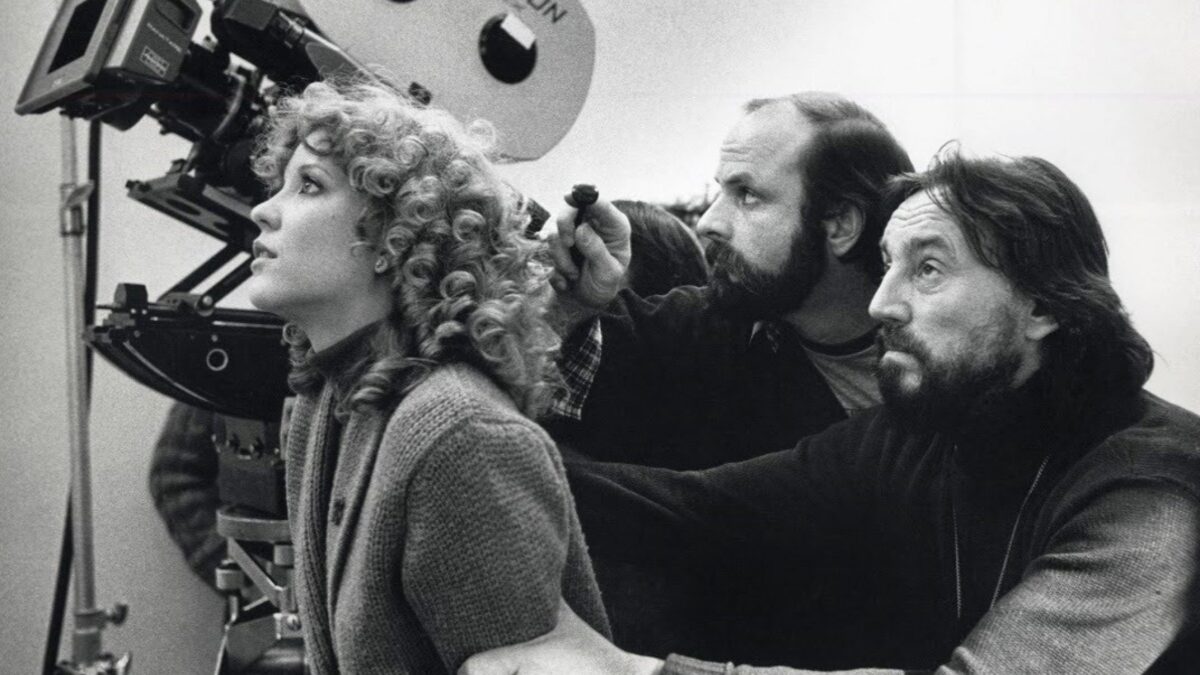
How Did Brian De Palma Make ‘Blow Out’?
De Palma worked closely with cinematographer Vilmos Zsigmond and editor Paul Hirsch to create the film’s distinctive visual style, which features a mix of slow-motion shots, split-screen sequences, and elaborate tracking shots to create a movie that felt modern and about his experience.
De Palma also collaborated with composer Pino Donaggio to create the film’s haunting musical score, which features a mix of orchestral and electronic elements. The film’s sound design was also carefully crafted, with the use of subtle sound effects to create tension and suspense.
To create the film’s memorable opening sequence, De Palma and his team used a combination of practical effects and miniatures. They also built a custom camera rig that allowed them to film a moving car from multiple angles simultaneously.
There’s so much more that goes into the nuance of this movie.
What Are Some Key Details in De Palma’s Direction of Blow Out?
Brian De Palma’s direction of Blow Out is marked by several key details that contribute to the film’s unique style and overall impact. Here are some examples:
-
Use of Split-Screen: De Palma makes extensive use of split-screen in Blow Out to show multiple perspectives of the same event, heightening tension and suspense. For example, during the film’s climactic sequence, split-screen is used to show the killer’s point of view alongside Travolta’s character’s efforts to catch him.
-
Careful Framing: De Palma is known for his meticulous framing and shot composition, and Blow Out is no exception. The film’s opening sequence, which shows the production of a low-budget horror film, features a slow, sweeping crane shot that establishes the location and introduces several key characters.
-
Use of Sound: As the title suggests, sound is a crucial element of the movie. De Palma uses sound to create a sense of unease and tension, such as the use of a distant scream that gradually becomes louder during the opening sequence. Sound is also used as a plot device, as Travolta’s character discovers a crucial piece of evidence while editing audio.
-
Homages to Film Noir: The movie contains several homages to classic film noir, including the use of dark, moody lighting and the presence of a femme fatale character in Nancy Allen’s role.
-
Long Takes: De Palma is known for his use of long takes, and the movie contains several notable examples, including a tracking shot that follows Travolta’s character as he investigates a crime scene and a continuous take that shows a car crash from multiple perspectives.

Summing Up Brian De Palma’s Blow Out
Brian De Palma’s classic thriller showcases his mastery of suspense filmmaking. Through his collaboration with cinematographer Vilmos Zsigmond, composer Pino Donaggio, and editor Paul Hirsch, De Palma was able to create a distinctive visual style and a haunting musical score that perfectly complemented the film’s gripping storyline.
The movie’s memorable opening sequence and its use of practical effects and sound design demonstrate De Palma’s meticulous attention to detail and innovation.
Overall, Blow Out remains a must-watch for fans of the thriller genre and a testament to Brian De Palma’s skill as a filmmaker
Let me know your thoughts in the comments.














